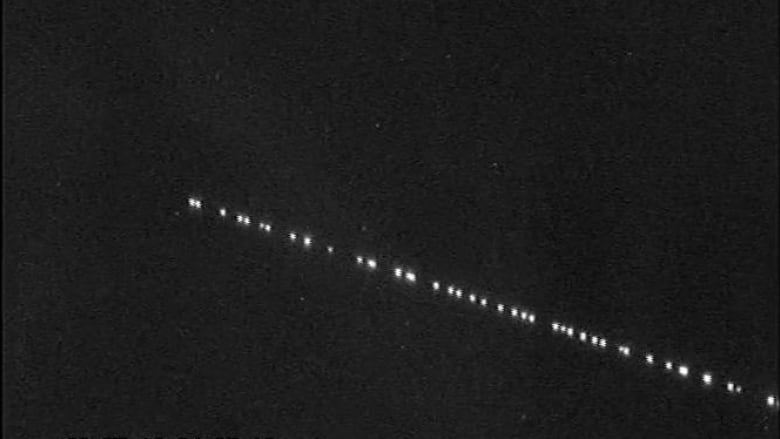Link to Marco Langbrocks Vimeo webpage
Link to Marco Langbrocks webpage
Link to Video of the launch of the 60 satellites
last week, SpaceX launched 60 satellites into space atop its Falcon 9 rocket. Less than a day later, astronomers captured their amazing trail of lights as they crossed the sky.
The 60 satellites launched by Space X are part of a project called Starlink. These new satellites will be part of a 12,000 satellite network whose goal is to provide much-improved internet access to every part of the world.
Marco Langbroek, an archeologist and spy satellite consultant based in the Netherlands, was stunned when he managed to record the satellites’ path using a low-light surveillance camera on May 24, 22 hours after their launch.
Astronomers are concerned about light pollution caused by the satellites.
How to see the satellites:
The satellites were at roughly 440 kilometres in altitude — slightly higher than the International Space Station. Over the coming days, as they orbit, they will rise to 550 kilometres.
There’s still a chance you could spot them, too. The keys are dark skies, patience and binoculars.
How to see them
First, you need to understand about visual magnitude. Astronomers have come up with a way of measuring the brightness of objects in the night sky.
The brightness of celestial objects is on a scale that goes from the very brightest — the sun — to the dimmest. And the lower the number (negative values), the brighter the object.
As you can see by the chart above, the visual magnitude limitation for the human eye is an object with a magnitude of +6, and that’s in dark-sky locations, away from the pollution of city lights. Within a city, that drops to +3.
The brightness of the Starlink satellites over Toronto, for example, range from roughly +6 to +3, right on the visual limit in light-polluted skies.
So, if you want to see the satellites — which will have spread out a bit more by now — get to a dark-sky location, away from city lights. They won’t be as bright as in Langbroek’s video, since he captured them with a low-light camera.





